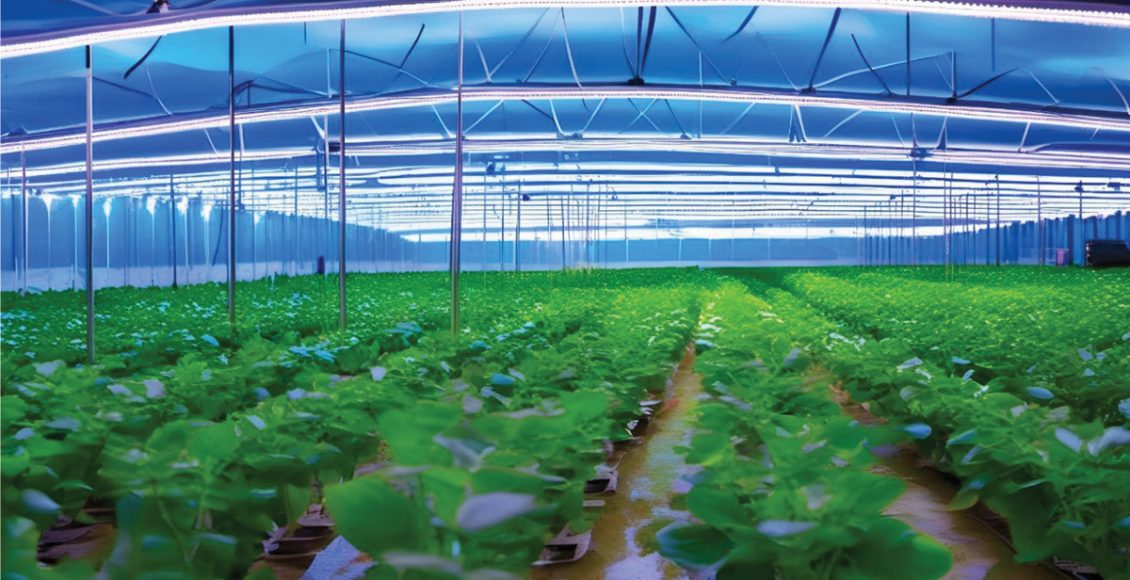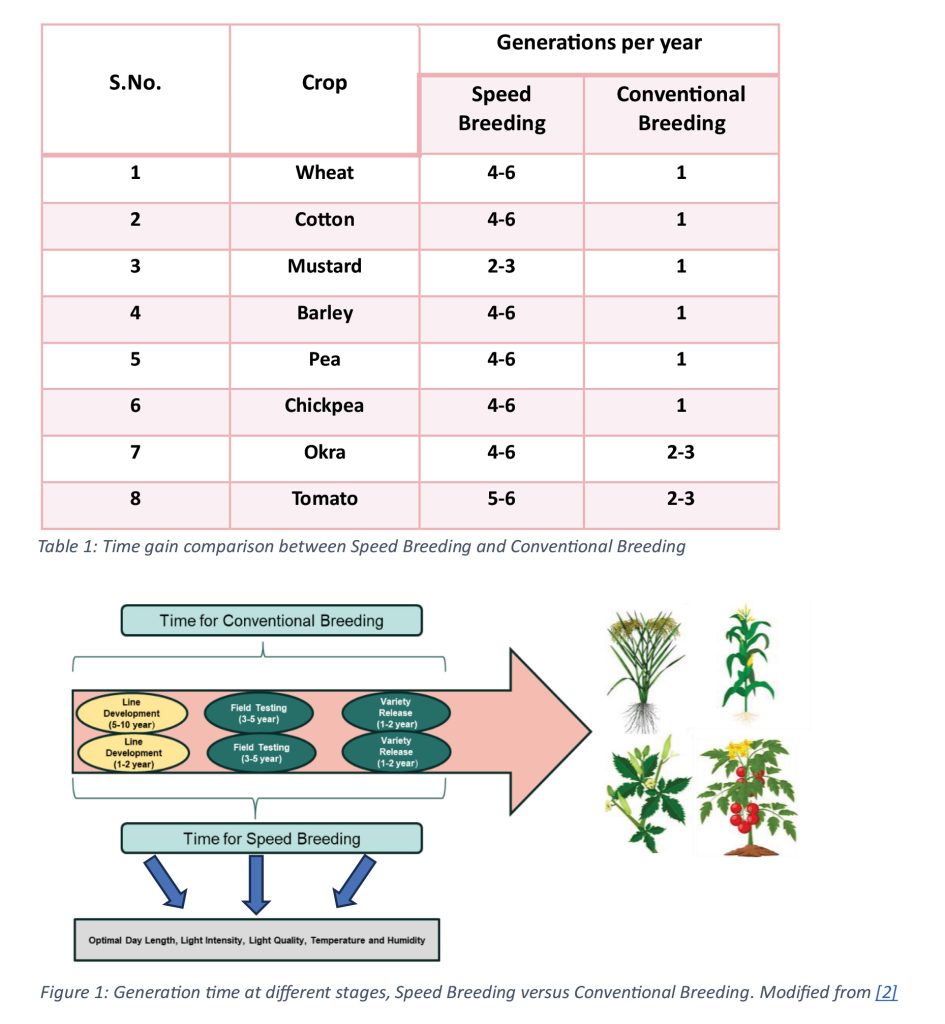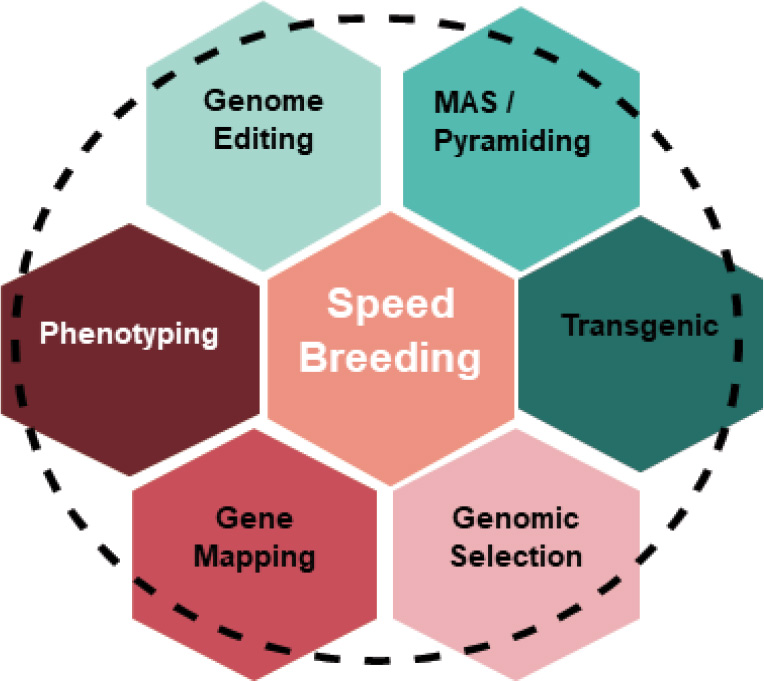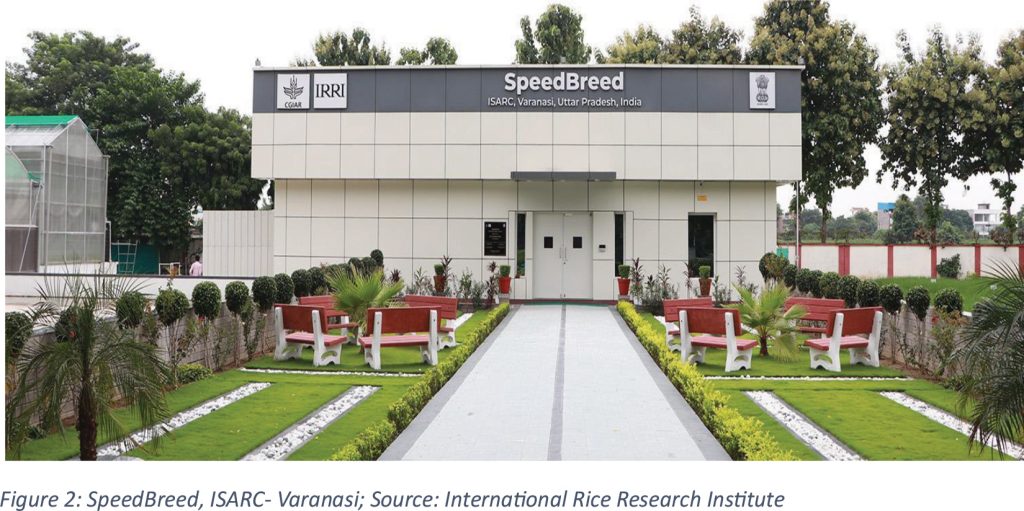
Crop Innovation in the Fast Lane: Unleashing the Potential of Speed Breeding
Introduction
With the global population continuing to soar, the demand for food is reaching unprecedented levels, and as per recent studies, farmers will be required to increase food production by 60-80% by 2050. Agricultural scientists continuously seek innovative solutions to enhance crop yields and develop resilient varieties that adapt to changing environmental conditions. One of the groundbreaking techniques making waves in the agricultural world is “Speed Breeding.” This method accelerates the breeding process for field and vegetable crops and offers hope for ensuring food security in the face of a growing population and climate change.
What is Speed Breeding?
Speed Breeding (SB) is an advanced plant breeding technique that utilizes controlled environments and specific light regimes to accelerate the growth and reproductive cycles of crops. The process enables multiple generations of plants to be produced in a single year, significantly reducing the time to develop new and improved varieties.
The Speed Breeding process typically involves:
- Light Manipulation: Speed breeding utilizes high-intensity artificial lighting, such as LED lights, to provide plants with extended periods of light exposure (up to 22 hours a day). It emits more blue and red lights that allow plants to grow in less time. Many of the factors crucial for plant growth, such as photosynthetic rate, stomatal regulation, and the rate of transpiration, are influenced by the photoperiod. Adjustment of the photoperiod can be sustainably achieved by full spectrum LEDs and maintaining an external light-proof chamber facility.
- Temperature and Moisture Control: By maintaining a consistent, slightly elevated temperature, speed breeding provides plants with a warm environment that stimulates their growth and reproductive capabilities. Each crop has an optimal temperature range that can be attained by properly taking into account temperature management mechanisms in SB systems to speed up the transition of the crop to the flowering stage. In a speed breeding facility, the ideal temperature-maintained ranges from 18°C to 42°C, and the RH should be between 60% to 90%.
- Controlled Environment: Speed breeding typically occurs in controlled growth chambers or greenhouses, where conditions can be precisely monitored and adjusted. Increased CO2 concentrations (optimally from 350 ppm to 1,200 ppm) can also boost plant growth by reducing photorespiration. For C3 plants such as rice and wheat, photosynthetic efficiency rises with increasing CO2 levels, resulting in an increase in biomass and early blooming. Growing media rich in nutrients is usually supplied to plants used in speed breeding, ensuring the plant’s rapid growth. All this is accompanied by automated irrigation and fertilization, ensuring the best possible environment for the plants to flourish.
Benefits of Speed Breeding in Field and Vegetable Crops
-
- Accelerating Breeding Cycles: Multiple phenotyping techniques optimized for speed breeding have been developed, facilitating the identification and selection of key traits. Screening a broad spectrum of traits in the early generations of population development is of interest to plant breeders, thereby accelerating speed to market by significantly reducing the line development time. This technology lowers the cost of labor and field testing, enabling breeding programs to save both money and time (Table 1; Figure 1).

- Enhancing Yield and Climate Adaptation: The shortened breeding cycle allows scientists to optimize the selection and breeding of field crops exhibiting higher yield potential and are better adapted to changing climates. SB facilitates the rapid screening and development of abiotic tolerance (drought and heat), and biotic resistance (insects and pathogens) crop varieties, crucial for ensuring food security in regions affected by unpredictable weather patterns.
- Improving Nutritional Content: SB enables the selection of field crop varieties with superior nutritional profiles. Crops enriched with essential nutrients, vitamins, and minerals can significantly impact global nutrition and public health, especially in regions where dietary deficiencies are prevalent. This will contribute to enhanced food security and dietary diversity.
- Adapting to Urban Agriculture: With the rise of urban agriculture and limited arable land, SB can be a game-changer. By developing compact and fast-growing vegetable varieties, urban farmers can maximize their crop yield and harvest fresh produce all year round.
- Supporting Sustainable Agriculture: By rapidly producing improved crop varieties, SB optimizes the need for chemical inputs and water consumption, contributing to more sustainable agricultural practices. These varieties are not only beneficial for farmers but also help conserve natural resources and protect the environment.
- Increased Crop Diversity: SB facilitates the exploration of a broader genetic pool, leading to the discovery and utilization of diverse vegetable traits and the development of cultivars with enhanced taste, color, and nutritional quality.
- Meeting Consumer Preferences: Consumer preferences for certain vegetable traits can change rapidly. Speed Breeding allows breeders to respond quickly to market demands, introducing new vegetable varieties that cater to specific tastes, shapes, and colours desired by consumers.
Challenges and Limitations
While speed breeding offers tremendous potential, it does come with some challenges and limitations:
- Cost: The initial setup and maintenance costs of speed breeding facilities, such as growth chambers and high-quality artificial lighting systems, can be significant. A fully controlled chamber of 500 sqft – 1000 sqft with CO2, temperature, RH, air flow/ventilation, light spectrum, light intensity, and photoperiod controls will cost around INR 20 lakhs to 30 lakhs. To maintain experimental crops under controlled conditions, it also necessitates the experience of skilled technicians.
- Genetic Stability: Rapid breeding cycles may lead to reduced genetic stability in some plant varieties. Ensuring the genetic integrity of the crops remains a crucial consideration in the speed breeding process.
- Sensitivity: Certain plant species suffer severe damage when exposed to continuous light, such as an extended photoperiod. Therefore, speed breeding protocols must be fine-tuned for photo-sensitive crops.
- Maintaining Diversity: Limited parent lines used in speed breeding may result in less genetic variety in the crop populations that are produced. To tackle this, the researchers need to focus on incorporating more varied germplasm.
- Confusion regarding safety: Although there are some ethical concerns related to the safety of speed breeding, there has been no conclusive evidence to back it. It merely quickens the plant’s organogenesis transition from vegetative to reproductive to hasten the seeds-to-seed cycle. It resembles what occurs to plants in the event of stress so that it speeds up the life cycle and produces seeds much faster. No genetic alteration is anticipated because no mutagens are used in the process.
Future Prospects
 Despite its challenges, Speed Breeding holds immense promise for revolutionizing field and vegetable breeding. As technology advances and becomes more affordable, the implementation of Speed Breeding techniques is anticipated to become widespread. When paired with other current breeding techniques such as gene editing, genomic selection, and marker-assisted selection, speed breeding can improve selection effectiveness while also reducing generation time to release a variety.
Despite its challenges, Speed Breeding holds immense promise for revolutionizing field and vegetable breeding. As technology advances and becomes more affordable, the implementation of Speed Breeding techniques is anticipated to become widespread. When paired with other current breeding techniques such as gene editing, genomic selection, and marker-assisted selection, speed breeding can improve selection effectiveness while also reducing generation time to release a variety.
In India, there have been strides in terms of accelerating more research in speed breeding. Many ICAR Institutes and SAUs have started collaborating to work on speed breeding on crops like wheat, pea, barley, canola, rice maize, and tomato with improved traits. In December 2021, India‘s Prime Minister Narendra Modi inaugurated IRRI‘s state-of-the-art speed breeding (SpeedBreed) facility at the IRRI South Asia Regional Centre (ISARC) in Varanasi.

There are several other institutes with controlled speed breeding facilities in India, namely ICRISAT-Hyderabad, TNAU-Coimbatore, PAU-Ludhiana, IARI-New Delhi, and IIPR-Kanpur which have all the facilities to conduct speed breeding. Also, many private sector companies have already started and are in the process of exploring possibilities to adopt it, which makes the future of speed breeding look promising in India.
Speed Breeding represents a revolutionary advancement in crop breeding technology, offering immense potential for both field and vegetable crops. As the world faces increasing challenges related to food security, climate change, and sustainability, this innovative approach holds the key to developing resilient and high-yielding crop varieties. By bridging the gap between agricultural research and practical implementation, Speed Breeding paves the way for a more productive, nutritious, and sustainable future in agriculture. Through ongoing research and collaborations, we can harness the full potential of Speed Breeding to feed the growing global population and build a better, more food-secure world.
References
- Daszkiewicz, T. Food Production in the Context of Global Developmental Challenges. Agriculture 2022, 12, 832. https://doi.org/10.3390/agriculture12060832
- https://www.researchtrend.net/bfij/pdf/Unlocking-Crop-Potential-Speed-Breeding-and-its-Synergies-with-Modern-Breeding-Techniques-Siddhanath-Shendekar-16.pdf
- Watson, A., Ghosh, S., Williams, M. J., Cuddy, W. S., Simmonds, J., Rey, M. D., … & Hickey, L. T. (2018). Speed breeding is a powerful tool to accelerate crop research and breeding. Nature Plants, 4(1), 23-29.
- Ghosh, S., Watson, A., Gonzalez-Navarro, O. E., Ramirez-Gonzalez, R. H., Yanes, L., Mendoza-Suárez, M., … & Hickey, L. T. (2018). Speed breeding in growth chambers and glasshouses for crop breeding and model plant research. Nature Protocols, 13(12), 2944-2963.
- Hickey, L. T., Lawson, W., Platz, G. J., Fowler, R. A., Arief, V. N., Dieters, M. J., … & Franckowiak, J. D. (2019). Speed breeding for multiple disease resistance in barley. Euphytica, 215(2), 32.
- Hickey LT, Hafeez AN, Robinson H, et al. Breeding crops to feed 10 billion. Nat Biotechnol. 2019;37(2):744-754. doi:10.1038/s41587-019-0152-9
- Jafarzadeh, J., Bonnett, D. G., Mullan, D., Li, C., & Stevens, J. (2020). Speed breeding of field crops: A new era in enhancing genetic gains. Plant Science, 294, 110462.
- Alemu, A. W., Butler, R., Byrne, S., & Chao, S. (2020). Speed breeding orphan crops. Theoretical and Applied Genetics, 133(3), 787-798.
- Sørensen, K. K., & Andersen, S. B. (2021). High-throughput speed breeding of vegetable crops and model plants. Horticulture Research, 8(1), 1-10.
- Shaik Rehana, Gandikota Brahmani & Chukkamettu Anusha (2023). Speed Breeding in Vegetables: A Potential approach for Future Food Security. Just Agriculture, Vol. 3, Issue-8, April 2023, 495-503.
Authors


Connect with Authors at: E-mail agribusiness@sathguru.com
 Grow Beyond
Grow Beyond 

